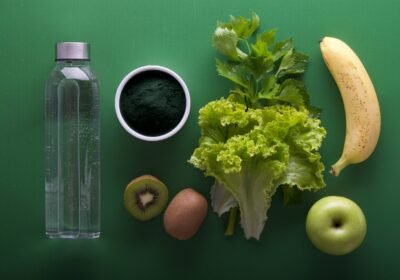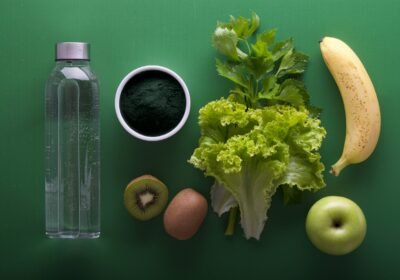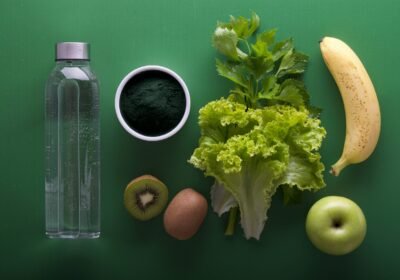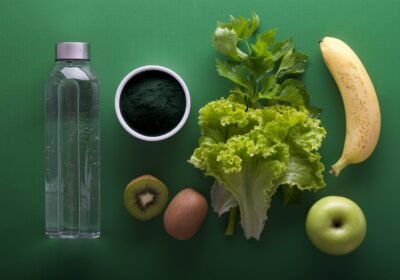Unlocking the Secrets of Micronesian Nutrition: The Power of Local Superfoods
Introduction to Micronesian Superfoods
Micronesia, a vast region comprised of hundreds of islands in the western Pacific Ocean, is home to a rich culinary heritage that values the unique natural resources available in its environment. Traditional Micronesian foods, often referred to as superfoods, are gaining increasing recognition for their health benefits and contributions to overall wellness. These foods, which include taro, breadfruit, seafood, and various leafy greens, not only serve as a source of nourishment but also play a vital role in the cultural identity and dietary practices of the Micronesian people.
Recent trends in health and nutrition have spotlighted these local ingredients, showcasing their rich nutritional profiles. For instance, taro is known for its high fiber content and essential vitamins, while breadfruit is packed with carbohydrates and beneficial phytochemicals. Seafood, a staple in the Micronesian diet, is rich in omega-3 fatty acids, promoting heart health and cognitive function. By incorporating these superfoods into their daily meals, individuals can benefit from the vital nutrients that support a healthy lifestyle.
Moreover, the use of local superfoods aligns with the growing interest in sustainable and environmentally friendly eating practices. Many Micronesian dishes favor fresh, locally sourced ingredients over processed foods, enabling individuals to consume meals that are not only nutritious but also sustainable. This connection to place and tradition fosters a sense of community and encourages the practice of preserving indigenous food systems. As the popularity of Micronesian superfoods continues to rise, they are emerging not only as cultural staples but also as essential components of contemporary health trends worldwide, reinforcing the significance of local agriculture and traditional diets.
The Health Benefits of Traditional Micronesian Diets
The traditional diets of Micronesia are rich in local superfoods that contribute significantly to the overall health and well-being of its people. Key ingredients such as taro, coconut, and seaweed are staples in these diets and offer numerous health benefits. Taro, a root vegetable, is not only a good source of complex carbohydrates but also provides dietary fiber, potassium, and vitamins A and C. Its low glycemic index makes it an excellent choice for maintaining stable blood sugar levels, which is essential for metabolic health.
Coconut is another cornerstone of Micronesian cuisine, revered for its versatility and nutritional benefits. Both coconut flesh and coconut water are highly hydrating and rich in electrolytes. Additionally, coconuts contain medium-chain triglycerides (MCTs), which are known to support weight management and boost energy levels. The healthy fats present in coconut also play a vital role in promoting heart health, which is critical in preventing heart disease, a concern in many regions.
Seaweed is an often-overlooked superfood, yet it is abundant in Micronesian diets. Rich in essential nutrients such as iodine, calcium, and antioxidants, seaweed supports thyroid function, which is vital for metabolism and energy production. Its high fiber content also aids digestion and may contribute to lower cholesterol levels. Furthermore, the anti-inflammatory properties of seaweed can play a role in the prevention of chronic diseases, enhancing overall longevity.
Adopting a traditional Micronesian diet can lead to improved physical health and longevity. The combination of diverse and nutrient-dense foods like taro, coconut, and seaweed provides essential vitamins and minerals that contribute to a balanced diet. As modern dietary patterns continue to evolve, returning to these foundational foods may hold the key to enhanced health outcomes in the Micronesian population and beyond.
Modern Takes on Micronesian Nutrition
The essence of Micronesian nutrition is being revitalized in contemporary diets as people increasingly recognize the significance of traditional foods. Recent diet trends are not just celebrating these local superfoods but are also integrating them into modern recipes to promote healthier lifestyles. A remarkable trend is the fusion of traditional Micronesian ingredients, such as taro, breadfruit, and fish, with global cuisines, thus making them more accessible to the average consumer.
For instance, taro, a staple in the Micronesian diet known for its high fiber content, is now being featured in high-energy smoothies and as a nutritious flour alternative for baking. Recipes incorporating taro chips as a crunchy snack or using mashed taro in pancakes are gaining popularity. Similarly, breadfruit is being embraced for its versatility. Its application ranges from being a base for pizza crust to being transformed into gluten-free bread alternatives.
Moreover, fresh fish, which plays an integral role in the traditional diet, is finding its place in contemporary meal planning. Dishes combining marinated fish with tropical fruits such as pineapple and mango provide a refreshing twist on classic ceviche, enhancing flavors while offering essential nutrients. Labelling these dishes as “Micronesian-inspired” not only adds cultural depth but also highlights the health benefits associated with these local ingredients.
In addition to exciting meal ideas, meal prep strategies utilizing Micronesian superfoods are also emerging. Community workshops centered on cooking traditional recipes with a modern lens are being organized, promoting educational awareness about nutrition. These efforts reflect a growing acknowledgment that sustainable eating practices rooted in local culture lead to enhanced overall well-being. As modern takes on Micronesian nutrition continue to evolve, individuals are encouraged to explore the myriad of possibilities these local superfoods present.
Sustainable Eating Practices in Micronesia
Sustainable eating practices play a pivotal role in addressing food security and environmental challenges in Micronesia. Given the region’s unique geographical features and biodiversity, local agriculture focuses heavily on the cultivation of indigenous crops, fish, and sustainable livestock practices, which are vital for promoting health and well-being in the community. These sustainable practices empower individuals to make informed decisions that positively affect their health, the community’s economy, and the environment.
In Micronesia, traditional diets are largely comprised of locally sourced foods such as taro, breadfruit, and fish. By prioritizing these local superfoods, communities can markedly reduce their carbon footprints and dependence on imported goods, thereby enhancing food sovereignty. Importantly, these local superfoods are not only nutritionally dense but are also aligned with a sustainable eating philosophy that fosters resilience against climate change.
The interdependence between agriculture and the environment in Micronesia cannot be overstated. When communities embrace sustainable agricultural practices, they maintain the integrity of the ecosystem, support biodiversity, and protect natural resources essential for future generations. This is crucial, considering that many islands in Micronesia are facing the brunt of rising sea levels and changing weather patterns.
Furthermore, sustainable eating has profound implications for health at both the individual and community levels. Nutrient-rich foods decrease the likelihood of chronic diseases while enhancing overall health. By integrating the principles of local agriculture into daily meals, individuals not only nourish their bodies but also contribute to a broader movement towards a sustainable lifestyle. As more Micronesians adopt these sustainable practices, they may inspire others and pave the way for a healthier, more resilient future.
Embracing sustainable eating practices in Micronesia is vital for ensuring the well-being of the population and preserving the natural environment. Recommendations include supporting local farmers, participating in community gardens, and prioritizing seasonal and indigenous foods. Through these collective efforts, Micronesians can harness the power of local superfoods and create a sustainable future for all.









